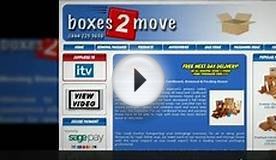Cardboard box Manufacturers
 From basic storage boxes to multi-colored card stock, is available in an array of sizes and forms. A term for heavier paper-based products, cardboard can range in manufacturing method as well as aesthetic, and as a result can be found in vastly different applications. Because cardboard doesn’t refer to a specific material but rather a category of materials, it is helpful to consider it in terms of three separate groups: paperboard, corrugated fiberboard, and card stock.
From basic storage boxes to multi-colored card stock, is available in an array of sizes and forms. A term for heavier paper-based products, cardboard can range in manufacturing method as well as aesthetic, and as a result can be found in vastly different applications. Because cardboard doesn’t refer to a specific material but rather a category of materials, it is helpful to consider it in terms of three separate groups: paperboard, corrugated fiberboard, and card stock.
Paperboard is typically 0.010 inches in thickness or less, and is essentially a thicker form of standard paper. The manufacturing process begins with pulping, the separation of wood (hardwood and sapwood) into individual fibers, as accomplished by mechanical methods or chemical treatment.
Mechanical pulping typically involves grinding the wood down using silicon carbide or aluminum oxide to break down the wood and separate fibers. Chemical pulping introduces a chemical component to the wood at high heat, which breaks down the fibers that bind cellulose together. There are approximately thirteen different kinds of mechanical and chemical pulping used in the U.S.
To make paperboard, bleached or unbleached kraft processes and semichecmical processes are the two types of pulping typically applied. Kraft processes achieve pulping by using a mixture of sodium hydroxide and sodium sulfate to separate the fibers that link cellulose. If the process is bleached, additional chemicals, such as surfactants and defoamers, are added to improve the efficiency and quality of the process. Other chemicals used during bleaching can literally bleach the dark pigment of the pulp, making it more desirable for certain applications.
Semichemical processes pre-treat wood with chemicals, such as sodium carbonate or sodium sulfate, then refine the wood using a mechanical process. The process is less intense than typical chemical processing because it doesn’t completely break down the fiber that binds cellulose, and can take place at lower temperatures and under less extreme conditions.
Once pulping has reduced wood to wood fibers, the resulting dilute pulp is spread out along a moving belt. Water is removed from the mixture by natural evaporation and a vacuum, and the fibers are then pressed for consolidation and to remove any excess moisture. After pressing, the pulp is stream-heated using rollers, and additional resin or starch is added as needed. A series of rollers called a calendar stack is then used to smooth and finish the final paperboard.



|
Bankers Box R-Kive Heavy-Duty Storage Boxes, Letter/Legal, Woodgrain, 12 Pack (00725) Office Product (Fellowes)
|

|
Bankers Box Stor/File Medium-Duty Storage Boxes with String & Button, Letter, 12 Pack (00704) Office Product (Fellowes)
|



|
1 X Molkky in Cardboard Box Toy (Tactic Games)
|
|
Eagwell® Wireless Bluetooth Gamepad Remote Controller Compatible with 3D VR Glasses Google Cardboard Selfie Camera Shutter Wireless Mouse Music Player iPhone iPad Ebook Tablet PC TV (Black) Wireless (Eagwell)
|
|

|
Karen Foster 3D Countdown Calendar, 25 Drawers Art and Craft Supply (KAREN FOSTER)
|